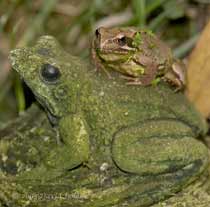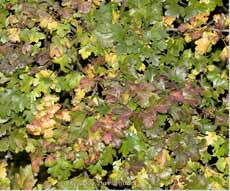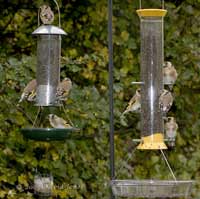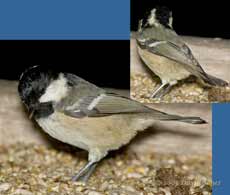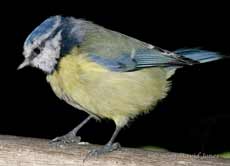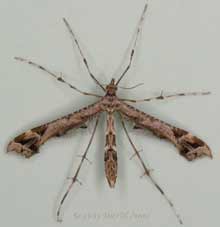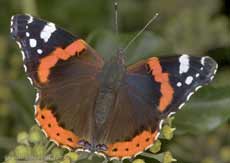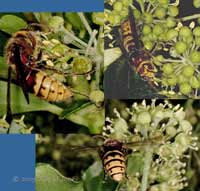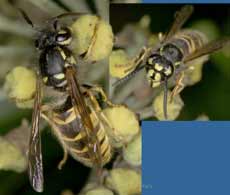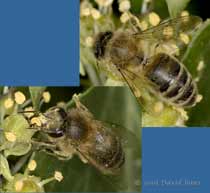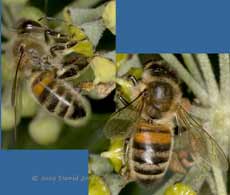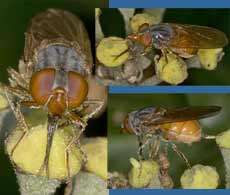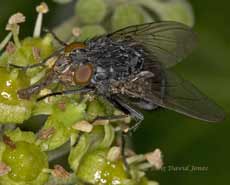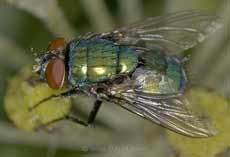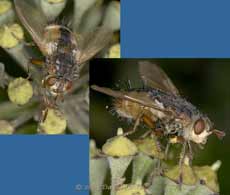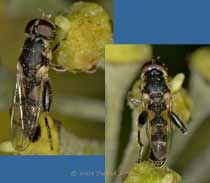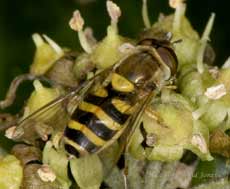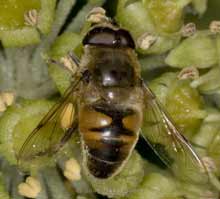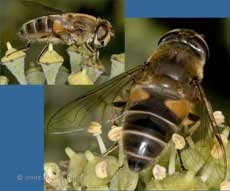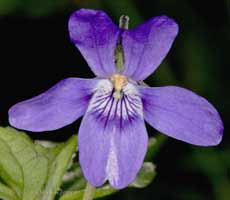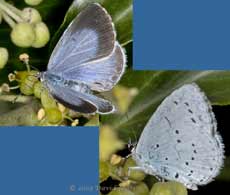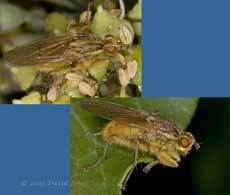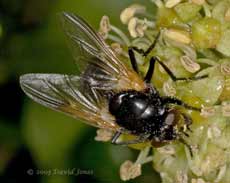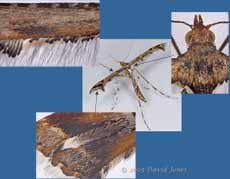Go to the last entry on this page .....Go to previous entry
Today it has stayed dry, although remaining
largely overcast, and it is a bit cooler - yesterday we had lunch out on the
veranda, frog watching as we ate!
Now that the House Martins have left us, and as the weather changes we are turning our attention to the Autumn. The ground below the Hawthorn is gradually getting a covering of leaves as the Sparrows shake them off the tree. The picture shows the present state of the Hawthorn's leaf cover - the small birds can still hide in it for the moment!
At the other end of the garden the Himalayan Birch is still green and holding onto its leaves, unlike my neighbour's native Birch which is now busy shedding its foliage, and the Rowan leaves are just starting to turn red.
The Goldfinches have become very frequent
visitors now, much more so than we have seen in the past. If the numbers
increase further we may have to replace the left-hand feeder with a second
larger one. Despite the small holes in these feeders there is a lot of wastage from them which usually ends up on the ground. To control this problem I have suspended trays below the feeders. These are emptied out regularly, and in the meantime the Goldfinches take the opportunity to feed from the seed that has collected in them. Over the last few days we have been getting another welcome visitor in the shape of this small Coal Tit. It is a very nervous bird when it approaches the bird table, darting in and out very quickly, so I had to use flash and a fast shutter speed as I hand held the camera. Unfortunately this meant that the background appears black, the same colour as the bird's head plumage. In the top-right image, notice the white
band that runs up the back of its head.
14 October - A dull and damp start to the day, and around 13C outside.
Although these are found all over the UK, it seems that they are not seen too often. They have two generations during the year, in July and then from September onwards. This individual may well be looking for somewhere to hibernate until next Spring. There is no sign of it this morning, but if it appears again tonight I shall take some more close-ups to show details of its wings.
16 October - The last two days, after typical autumnal misty mornings, we have had pretty close to typical summer days with sunshine, and temperatures up to 20C. However, as this afternoon progressed cloud cover increased, and this evening, around dusk rain arrived. Yesterday, and again today I spent several hours up on my scaffold tower, watching the comings and goings around the Ivy flowers. The CFS has been a bit of a pain and as a result I've not been able to sort out all the photographs taken, but here are a few - I hope to add some more tomorrow.
First of all, the most striking, and regular visitors, the Red Admiral butterflies. Over the two days I saw at least three individuals, two with damaged wings and this very fresh looking butterfly.
This afternoon, as I got to the top of the tower I spotted this rare sighting in our garden, a Hornet. A bit too far away for my ring flash and it didn't stay around to wait for me to make camera adjustments, so these images needed a bit of first aid, and it didn't return.
There were a few wasps about for most of the time I was watching, but the low numbers reflect the lack of wasps through the summer months. Yesterday I caught a glimpse of what I think was a solitary wasp with a slender black abdomen with thin yellow bands.
There were also small numbers of bees visiting the Ivy - I think this is a Honey bee.
There were also several of these bees, with orange bands around the abdomen which makes me wonder if it is a different species to the Honey Bee.
The most frequent visitors were true flies and Hoverflies. I haven't been able to identify this first example with an orange abdomen and a long proboscis with a forked 'tongue' which it used to lap up the nectar - Thanks to Phillipe Moniotte who has e-mailed me to say that this is probably Rhingia rostrata, a hoverfly that seems to recorded rather infrequently and prefers woodland.
Probably the most obvious flies were the Bluebottles,
and, in lesser numbers, the Greenbottles.
This is another fly. I can't identify it, but it looks similar to a couple of horse-fly species. - Thanks again to Phillipe for pointing me in the direction of Tachina fera (which I missed despite it being in my Collins guide). This is a species normally found in woods and moist habitats, especially waterside plants in late summer.
The hoverflies that came to the Ivy included this tiny species, possibly Syritta pipiens. Remembering that the flower head measures 4mm across, this hoverfly is less than 8mm long.
Larger, and with bold markings was this (possibly) Syrphus torvus. It seems that it has hairy eyes, but I will need to get nearer to record that detail.
There were two large Hoverfly species making frequent visits. The first is the Drone-fly, Eristalis tenax,
and the second is another drone-fly called Eristalis interruptus.
In the evenings I have been disappointed by the lack of moths. However, there were a couple of the Amblyptilia acanthadactyla that I photographed in the bathroom on the 14th - I still need to take some close-ups of its wing(s).
Down at ground level, there are White Dead-nettles in flower, as well as this Common Dog-violet.
17 October - Another misty morning after a damp evening, but it brightened up later and I spent a bit more time up the tower. I saw all the insects shown above, with the exception of the Hornet which didn't reappear. However, there were several extra sightings to report.
First of all, as well as several Red Admirals again, two more butterfly species made an appearance, a Painted Lady which escaped my camera, and this Holly Blue.
This Yellow Dung-fly (Scathophaga stercoraria - I think) spent a small part of its time feeding on the Ivy nectar (upper image) and most of the time waiting to ambush other small flies that came to feed, adopting the pose shown in the lower image. As its name suggests, it normally prefers cow pats and horse dung.
One other fly caught my sight with its bright orange area at the wing bases contrasting with the black body. The nearest match I can find is a species called Mesembrina meridiana which breeds on dung and feeds at flowers in woods and hedgerows.
18 October - Today it is dull and cooler (13C at 1.30pm), with just a few spots of rain during the morning. Since commenting on the appearance of the plume moth Amblyptilia acanthadactyla a few days ago, more individuals have been appearing - I moved one from our kitchen to the Ivy last night, and another one turned up this morning.
It's always amazing to look at moths and butterflies very closely and see how their colour patterns become mosaics of scales. In the case of this micro-moth (which has a wingspan of 20mm) the scales on the thorax look as though they are a few sizes too big! The 'head and shoulders' shot had to be taken as three separate images which were then blended together to give more depth of focus in the final image. 19 October - A wet day, with periods of heavy rain, accompanied by thunder during one downpour. We took advantage of the conditions to do some rearranging of Sheila's sewing room, when I wasn't searching for a couple of things that I've mislaid, like a set of rechargeable batteries for my camera! Phillipe Moniotte has come to my assistance again, giving me a probable ID for the fly with the Orange abdomen that is shown in the diary entry for the 16th. I've added to the details to that entry. Click on the images to see larger versions - |
|
